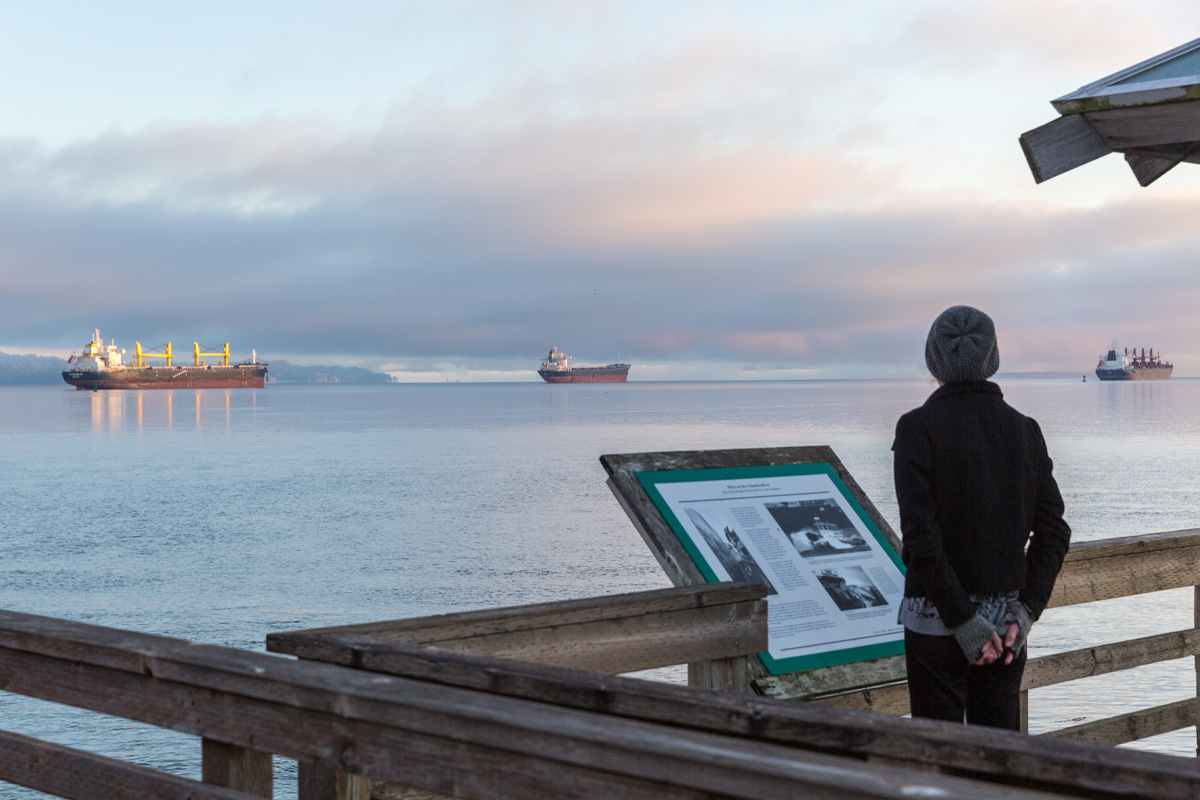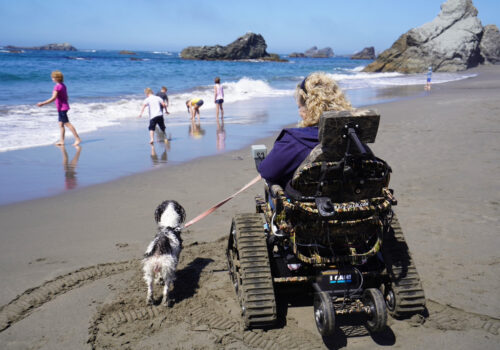
View tankers, container ships and tugboats as they pass by this historic coastal city.
Most visitors to Astoria arrive from the east or south. It’s the most northwestern city in Oregon, after all, situated on the south bank of the Columbia River where it meets the roiling Pacific Ocean. But a few special visitors to Astoria actually arrive from the west, and some of them haven’t seen land in nearly two weeks.
The chance to see those travelers — huge oceangoing vessels like tankers, car carriers and dry-bulk carriers — pass within just a few dozen feet of the Astoria waterfront draws ship watchers from across the country. Here’s a beginner’s guide to spotting marine vessels of all varieties in this thriving coastal community.

Get to Know Astoria’s Shipping Traffic
Joanne Rideout knows ships, and she helps Astoria make sense of the constant comings and goings with her almost-daily podcast and KMUN 91.9 program, The Ship Report. “Astoria is unique among ports I’ve been to in that the ship channel runs so close to the Astoria waterfront that people can get a very close look at the ships,” she says.
On any given day, you might see dozens of different types of boats. Commercial and sport fishing boats, cruise ships, research vessels and 675-foot behemoths stacked with cars, grain or minerals — they all pass within a few dozen feet of downtown. Astoria is also one of the nation’s 14 official Coast Guard cities, so you might see cutters, training vessels or the buoy tender USCGC Elm, which maintains navigation aids up and down the Oregon Coast. Gunmetal-gray Army ships also pass by en route to various missions.
One thing they all share? A healthy respect for often challenging maritime conditions. Once known for many shipwrecks, the Columbia River Bar crossing earned the nickname “Graveyard of the Pacific.” Though jetties and improved navigation have reduced dangers, the area’s frequent storms, strong currents and an always shifting landscape of sand bars at the mouth of the river still create hazards.
To help navigate the Columbia, most boats take on an expert local guide called a bar pilot to help them as they cross the bar and enter the river from the ocean, then another guide called a river pilot to help captains navigate upriver to Portland or other destinations. You can see pilots boarding or transferring off of ships along Astoria’s downtown waterfront, especially in Astoria’s offshore anchorage areas on the east side of town. Look for a small yellow or orange boat sidling up to larger ones and a person climbing up or down an external ladder on the larger ship.
Curious what’s arriving when, or what that massive ship contains? The Columbia River Ship Traffic schedule, provided by “The Ship Report,” shows the day’s schedule as well as each ship’s destination and cargo. “It’s not just that they’re cool to watch, they’re very important in our lives,” says Rideout. “If you look around your house, most of your stuff was brought here by ship.”

Find a Perfect Perch
One thing about big boats: They don’t move fast. That means you can find a comfortable spot to settle in for a leisurely morning or afternoon of ship watching. Some of Astoria’s hotels, including the Cannery Pier Hotel & Spa and the Bowline Hotel, offer front-row seats to river traffic from the comfort of your guest room. Both also have a bar and a restaurant with stellar sightlines. Coffee Girl at Pier 39 encourages visitors to sip an espresso or enjoy pastries with a front-row view of ships on the east side of town.
All ships entering the Columbia must pass beneath the immense Astoria-Megler Bridge. “The bridge is so iconic, and it gives you the scale and size, so it’s a great place to take a picture,” says Rideout. Walking or biking down the Astoria Riverwalk beneath the bridge will give you perfect, obstruction-free shots.

While You’re in Town
Historic architecture, excellent breweries and delicious dining make Astoria a great place to spend the weekend. It’s also a cultural hub of the Coast. Downtown is dotted with galleries showing the work of local artists year-round, and the annual FisherPoets Gathering in February celebrates the creative talents of fishers, mariners, sailors and others whose professional life ties them to the sea.
You can also visit the Columbia River Maritime Museum right on Astoria’s waterfront to learn more about the maritime history of the area, including how Indigenous people navigated these treacherous waterways by dugout canoe. Visitors can also board the Lightship Columbia, a decommissioned vessel that served as a floating lighthouse for over 25 years. Afterward, head for a pint and a pizza at Fort George Brewery equipped with a new appreciation for the comforts of shore.
– By Margarett Waterbury
Top photo courtesy of Travel Astoria Warrenton



